Lake Merced: San Francisco’s Birding Jewel
By Angie Geiger
Located in the southwest corner of San Francisco, Lake Merced is one of only three remaining freshwater lakes in the city. There are multiple excellent birding areas within this 614 acre park. At 267 species, Lake Merced is the number two hotspot in San Francisco, (not including the Farallon Islands) according to eBird. It is home to quite a few breeding birds, the wintering grounds for numerous others and an important resting stop for many migrants.
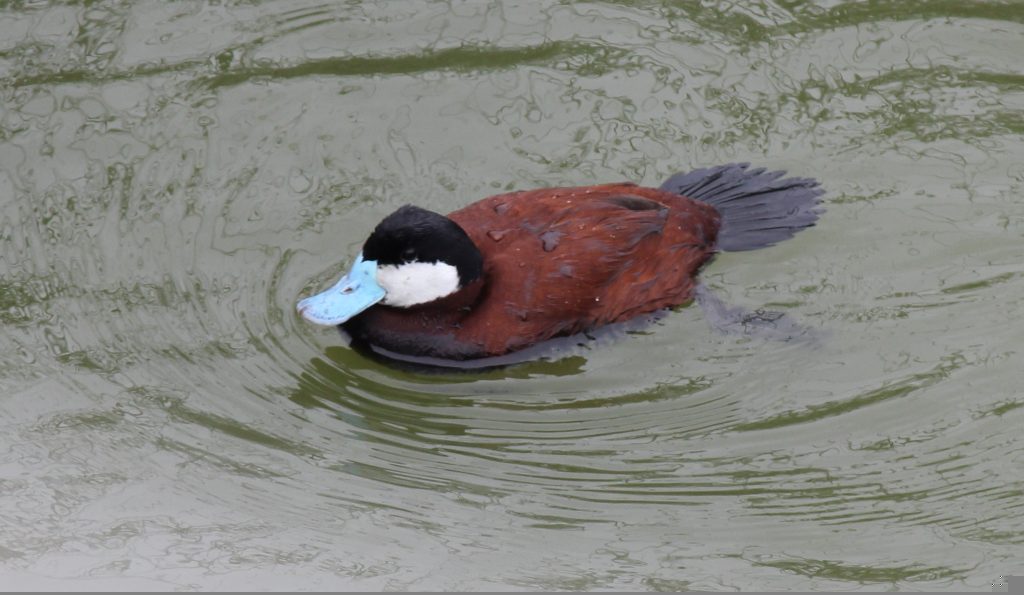
While it is possible to see birds anywhere around Lake Merced, the three most commonly birded areas are “the concrete bridge”, Sunset Circle, and Harding Park. All are directly on the lake and offer excellent views of the waterfowl on the lake, as well as lots of songbird activity in the reeds, trees and shrubs surrounding the lake. All three have parking lots and are also accessible by bike and public transportation.
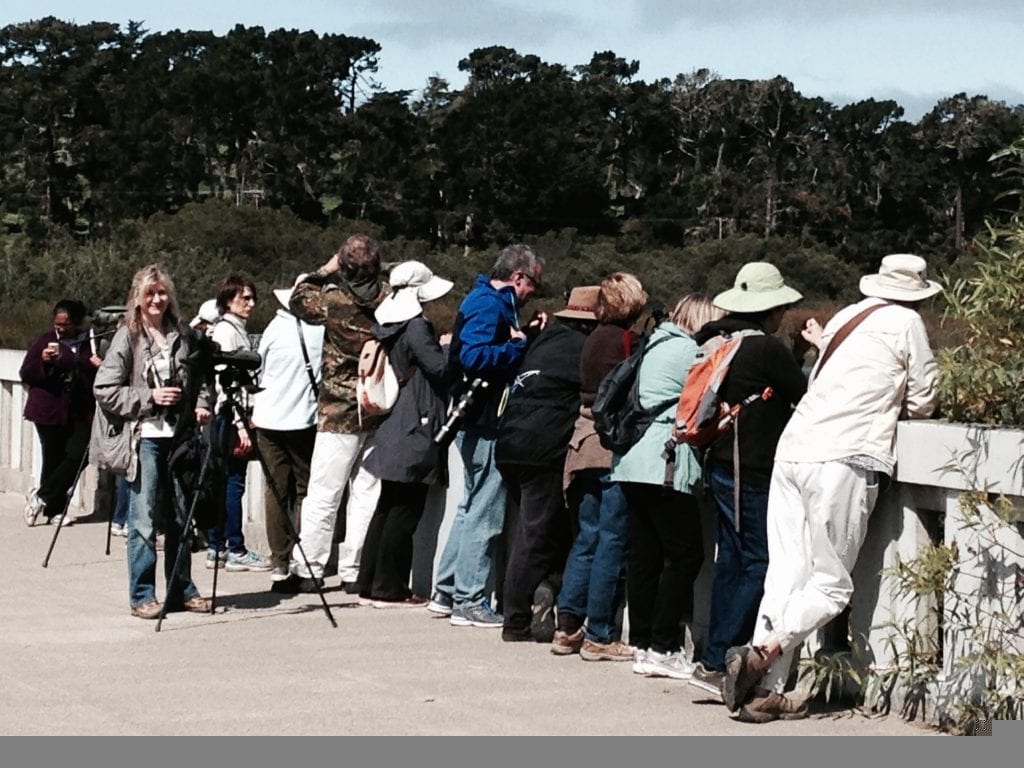
The concrete bridge area can be accessed on the east side via a small parking area on Lake Merced Blvd. or on the west side via John Muir Drive. If Gull identification is one of your avocations, this is the place to practice in the winter. Gulls of all ages are often on land and/or perched on the railings of the bridge for close-up views. Most common are Western, California, Mew and Glaucous-winged, with the odd Herring and Iceland Gull sometimes in the mix. Some years, Bonaparte’s Gulls have been spotted foraging on the lake in winter. In addition to the gulls, there are many species of Ducks and Grebes in among the Coots on the water. Breeding plumaged Ruddy Ducks can be seen with their neon-blue bills and the concrete bridge is a good place to watch the courtship behavior of Grebes. Both Western and Clark’s Grebes breed here, sometimes with each other producing consternating hybrids. You will spot begging offspring throughout the Spring and Summer. Once in a while the Concrete Bridge area attracts a Common Galinule. In addition to the Waterfowl, this area is also fairly reliable for Sora and Virginia Rail, more often heard than seen. Summer is a great time to practice your Swallow identification skills – six Swallow species can reliably be seen over the lake and perched on trees at the water’s edge. On the east side of the concrete bridge is a slight tree-covered hill featuring a Penguin sculpture. These trees often attract Warblers and other insect-gleaners and are a good place to check for rarities, such as Chestnut-sided Warbler. The base of the hill is frequented by Sparrows, such as White-crowned, Golden-crowned and Fox in Winter, and Song Sparrows all year round. Other past sightings near the concrete bridge include Northern Waterthrush, Swamp Sparrow, Tropical Kingbird and Osprey. Keep your eyes and ears wide open – you never know what you might encounter here. On a side note, if you hear gunfire, don’t be alarmed. There is a police shooting range not far from the concrete bridge.
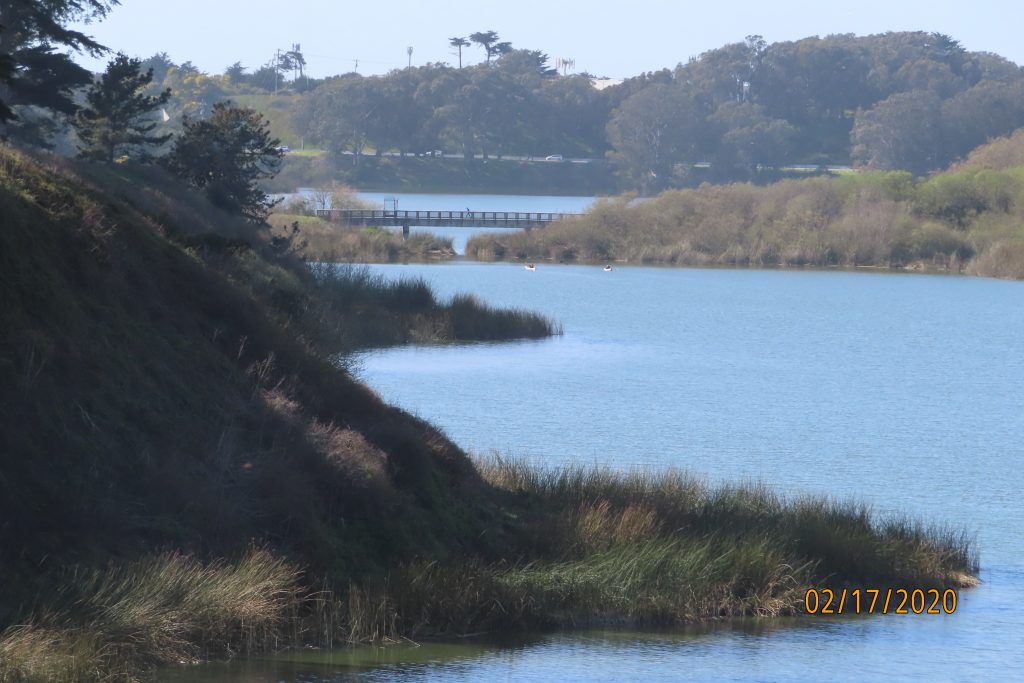
Continuing around the lake in a clockwise direction, you will encounter the entrance to Harding Park on Skyline Blvd. This area has picnic tables and a restroom. Just beyond the entrance, look to the Eucalyptus trees to the north, where there is a mixed breeding colony of Double-crested Cormorants and Great Blue Herons in the Spring and early Summer months. The nests fill the trees and are easily observed with binoculars. You will also have nice views of the lake, however, this area is home to the Boat House, so there are frequently high school crew teams or Dragon Boat teams practicing on the water. Beyond and below the boathouse is a small fishing pier that is worth exploring. Look for Marsh Wrens and Common Yellowthroats. Pygmy Nuthatches are almost guaranteed in the tall Monterey Pine and Cyprus trees throughout this area.
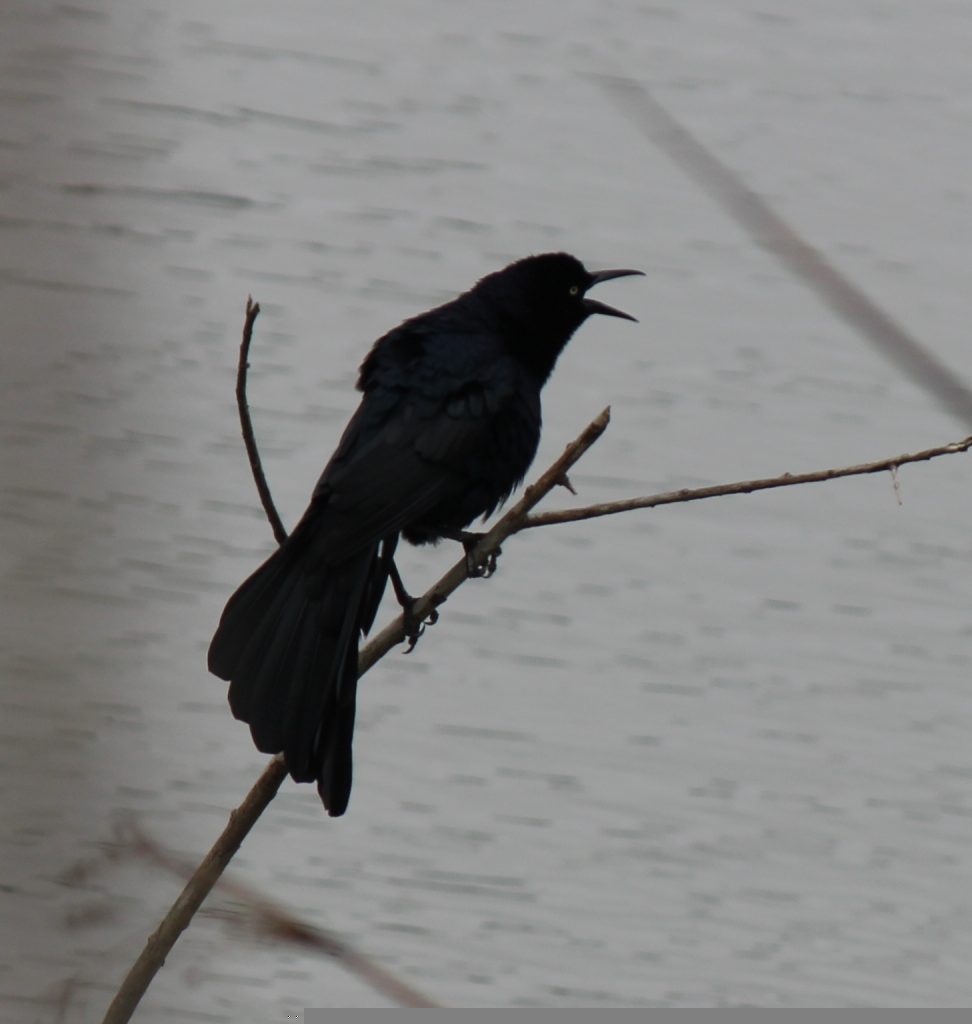
To explore the third main area at Lake Merced, exit Harding Park and turn right. Take a sharp right on Lake Merced Blvd. and you will eventually come to another parking lot in the area called Sunset Circle or sometimes “the Wooden Bridge”. The wooden bridge offers excellent views of this part of Lake Merced as well as the surrounding reeds. In the past, American Bittern has been spotted in the vicinity. After the bridge, explore the area just to the west of the parking lot. A gravel path that winds past Willow Trees on the left and a Eucalyptus grove on the right leads down to a fishing pier. Red-shouldered Hawks are known to nest in the Eucs, and the Willows attract a wide variety of Songbirds. Once you head back up, be sure to check the shrubs under the telephone pole. People often leave birdseed there that attracts lots of Sparrows, Doves and other seed-eaters.

Golden Gate Bird Alliance sometimes offers guided field trips to Lake Merced. Whether in a group or own your own, be sure to come early, as the area is popular with families, bicyclists and dog-walkers. Most of the areas are paved and flat and therefore accessible to wheelchairs. Restroom facilities are only available at Harding Park, however Porta Potties are located at the other two areas described. To get the most out of the sometimes distant views of the waterfowl, a spotting scope is very helpful.
San Francisco Rec & Parks will begin an improvement project around Lake Merced in 2020. The project includes removal of hazardous trees and pruning of the remaining trees; trail surface improvements, the addition of a restroom at Sunset Circle, improved signage and a fitness court at the John Muir Drive parking area at the concrete bridge.

Location: Southwestern part of San Francisco, surrounded by Lake Merced Blvd., John Muir Drive and Skyline Blvd. The three areas described above all have parking areas. There is also abundant curbside parking around the lake.
Hours/Fees: Sunrise to Sunset. Access to the park is free.
Dogs: On-leash dogs are allowed everywhere in the park.
Habitat: Freshwater coastal lake and wetland. Urban trees and shrubs.
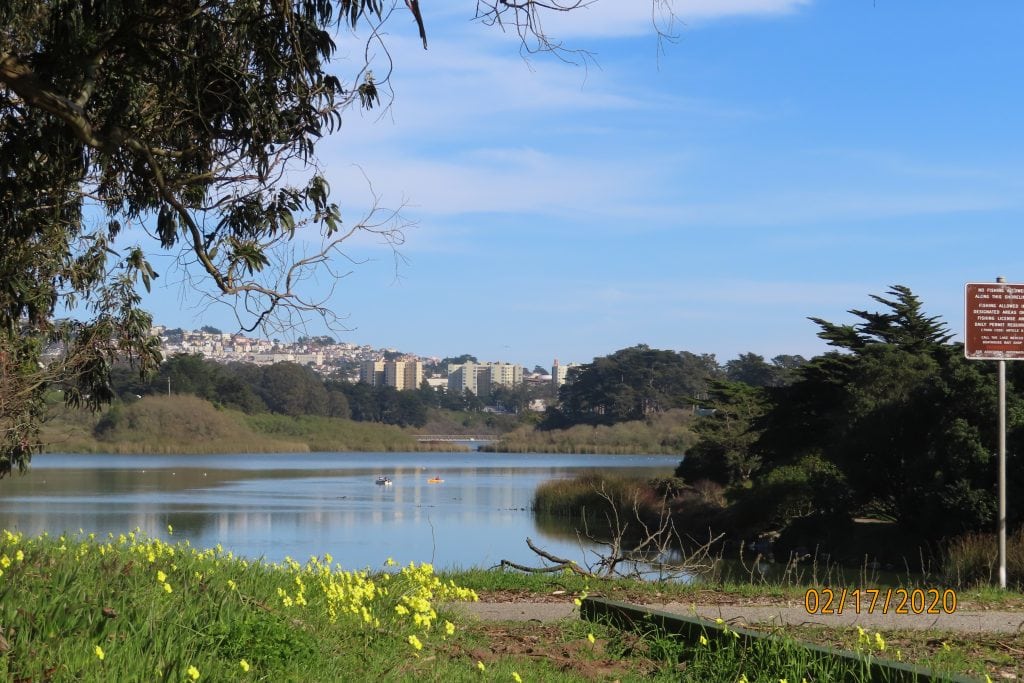
Key Birds
Year-Round: Mallards & Ruddy Ducks; Sparrows (Song, White-crowned); Herons (Great Blue, Green, Black-crowned Night); Double-crested Cormorants; Marsh Wrens; Grebes (Pied-bill, Western, Clarks): Chestnut-backed Chickadees; Pygmy Nuthatches; Bushtits; Jays (California and Stellars); Black Phoebes: Western Gulls; Hawks (Red-tailed and Red-Shouldered); Downy Woodpeckers; Common Yellowthroats; American Robin
Spring/Summer: Swallows (Barn, Tree, Violet-Green, Cliff, Bank, Northern Rough-winged); Wilson’s Warblers; Western Flycatcher
Winter: Ducks (Bufflehead, Ring-necked, other species); Eared Grebe; Gulls (California, Mew, Glaucous-winged, Ring-billed); Warblers (Yellow-rumped, Townsends, Orange-crowned); Hermit Thrushes; Ruby Crowned Kinglets; Sparrows (Golden-crowned, Fox); Sora; Virginia Rail
Ease of Access: Mostly paved, with some gravel trails, off-trail locations can be muddy in winter. Much of Lake Merced is wheelchair-accessible.
Getting There: The best way to get to Lake Merced is by bicycle or car. There is a Muni Bus #57 that stops at several locations near the lake
Nearby Services: Restroom at Harding Park, Porta Potties at the Concrete Bridge and Sunset Circle
Nearby cafes/restaurants: There are no places to purchase food at Lake Merced, but there is a water fountain at the restroom at Harding Park
For more information:
- https://www.sfparksalliance.org/our-parks/parks/lake-merced
- http://sfrecpark.org/Facilities/Facility/Details/Lake-Merced-Trail-58
Angie Geiger is is a San Francisco-based birdwatcher who shares her passion for birds and bird-conservation by leading bird-walks for the public on behalf of Golden Gate Bird Alliance. She spends many of her non-working hours exploring the many excellent bird-watching locations around the city and surrounding areas. To hone her bird identification skills, she took Joe Morlan’s field identification class for a number of years and also participated in the Master Birding Program jointly sponsored by GGBA and the California Academy of Sciences. She is never without her binoculars on her frequent national and international business trips. Angie is also a member of the GGBA San Francisco Conservation Committee.
